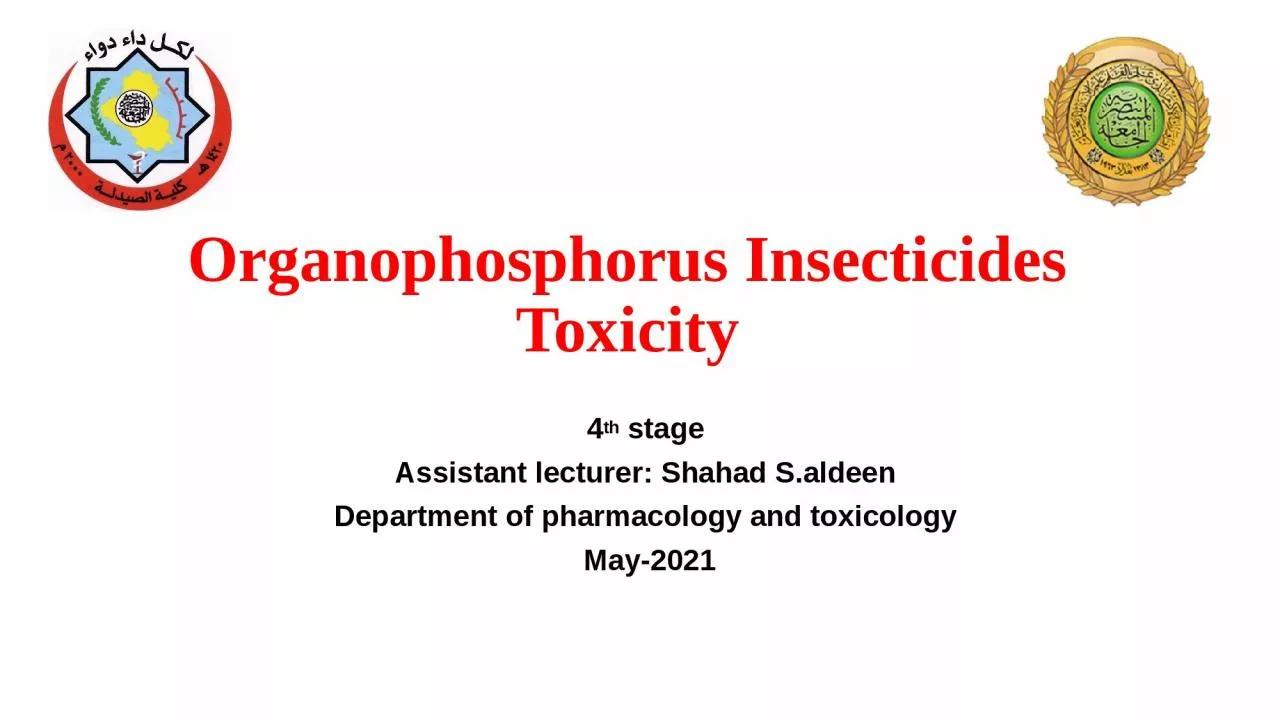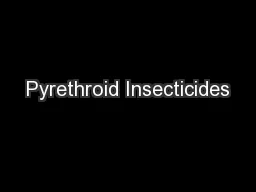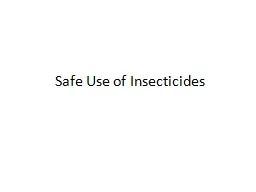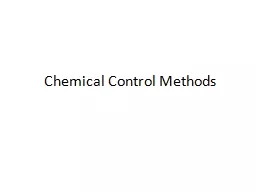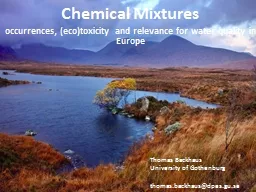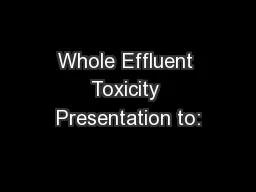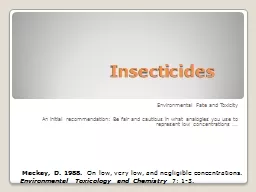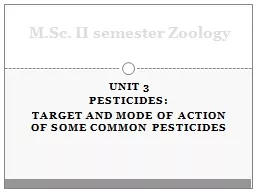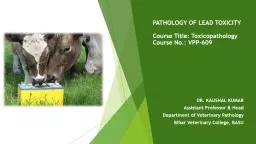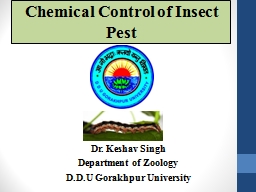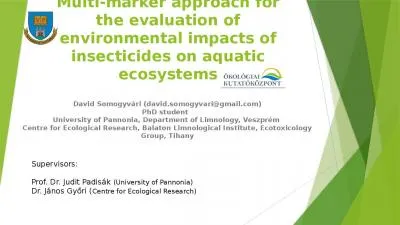PPT-Organophosphorus Insecticides Toxicity
Author : SweetiePie | Published Date : 2022-08-03
4 th stage Assistant lecturer Shahad Saldeen Department of pharmacology and toxicology May2021 Introduction Pesticide is a common term that comprise several
Presentation Embed Code
Download Presentation
Download Presentation The PPT/PDF document "Organophosphorus Insecticides Toxicity" is the property of its rightful owner. Permission is granted to download and print the materials on this website for personal, non-commercial use only, and to display it on your personal computer provided you do not modify the materials and that you retain all copyright notices contained in the materials. By downloading content from our website, you accept the terms of this agreement.
Organophosphorus Insecticides Toxicity: Transcript
Download Rules Of Document
"Organophosphorus Insecticides Toxicity"The content belongs to its owner. You may download and print it for personal use, without modification, and keep all copyright notices. By downloading, you agree to these terms.
Related Documents

